Cherry plum Traveler: description, planting a seedling and tips for care
Cherry plum Traveler is well-deservedly popular for its delicious early ripening fruits. It is distinguished by unpretentiousness in care, it tolerates a drop in temperature and a lack of moisture well. It is almost not affected by pests and diseases.
Content:
Description of the variety
The cherry plum variety Traveler was bred in the Crimea by breeders of the V.I. N.I. Vavilov by free pollination of Dessertny seedling. Registered as a variety in 1986. Chinese plum Burbank and cherry plum Tavricheskaya are its closest relatives.
The tree is low, up to 3 m.
The crown is compact, the number of skeletal branches is small. They grow almost horizontally, and hang to the ground under the weight of the fruit. The barrel of the gray light is smooth to the touch. The thickness of shoots with a large number of lentils is up to 4 mm. Leaves are oval, shiny, with pointed tops. The edge is jagged. The lower part is covered with a light edging. The petiole is 1 cm long without edge. The growing branches do not live long.
There are many flower buds every year. 2 flowers are revealed from each. The petals are white, delicate, with a pleasant strong aroma, reddish at the base. The stamens are long, shaggy. One pistil, it is longer than stamens. The pedicel is long, the petals are weakly closed. Early flowering, together with early ones plums, around mid-April.
The variety is self-fertile, it is a pollinator for other types of cherry plum, Chinese and Russian plums. The best pollinators for him:
- Found
- Tsarskaya
- Nesmeyana
In place of the flowers, fruits are formed. They are medium in size, about 28 mm, round in shape. Weight 19-28 g. The seam on the side is almost invisible. The main skin color is yellow, integumentary red-violet, solid, without streaks. The wax coating is weak. bloom, through which yellowish subcutaneous points are visible. Orange pulp, medium juiciness, fine fibers. The stone is medium in size and does not separate well from the pulp. The taste is sweet, with a light pleasant sourness, the pulp is aromatic.
The tree is distinguished by strong, stable annual fruiting. The fruits are delicious fresh. They can be processed into preserves, jams, sauces, delicious compotes.
The first fruits ripen in early July.
Growing cherry plum
Usually, the Traveler cherry plum is grown from seedlings purchased in fruit nurseries. It is better to plant in the southern regions in early autumn. Cherry plum will have time to take root by winter. In the central regions, it is better to do this in spring, otherwise the young tree may die from severe frosts. The northern border of cultivation runs at the latitude of the south of the Moscow region. When choosing a seedling, examine root system... It must be well developed. Better to buy a plant with a closed root system. It can be planted throughout the growing season.
The planting site is sunny, but the Traveler cherry plum can grow and bear fruit well in partial shade.
The variety is frost-resistant and relatively drought-resistant. Choose a place protected from wind and frost. Pay attention to soil drainage. Groundwater should not come close to the soil surface. Cherry plum does not like heavy wet soils. The soil prefers nutritious, loose, with good aeration.
Tips for planting a seedling:
- The pit is prepared no earlier than 3 weeks before planting the tree. This will allow the prepared soil to settle down and prevent the roots from breaking off after planting. An exception is container planting. It can be carried out into a freshly dug hole.
- A pit is prepared with a diameter of 1 m and a depth of 80 cm.
- The soil is mixed with a bucket of humus, compost, add a liter wood ash, mineral fertilizers (50 g superphosphate, 60 g potassium salt).
- Pour the prepared soil with a mound on the bottom of the pit.
- A peg is driven in, to which the tree will be tied.
A tree with an open root system is prepared and planted as follows:
- Examine the root system, prune thick roots. Remove damaged and dark parts of the roots. It is immersed in water for a few minutes with the addition of a root former. Clay shampoo
- Set the cherry plum so that the place vaccinations was located to the north and was above ground level. The root collar should not reach the ground by 4 cm.
- Sprinkle with the remaining soil so that there are no voids left between the roots. Watering can be done before falling asleep or after the bulk of the land has been brought into the pit.
- Add 1-2 buckets of water per tree. Make sure that the roots are not damaged during planting.
- The trunk circle is mulched with a thick, not less than 7 cm, layer of peat, compost, cut grass. A layer of mulch will protect the cherry plum root system from drying out and allow it to be watered less frequently. She will not let the weeds drown out the tree. Over the summer, add a layer of mulch.
Distance in a row between two trees 2.5 m, between rows 3.5 m.
Care advice
How to properly care for a tree so that it bears fruit well:
- Cherry plum Traveler does not like stagnant water in the root system, so you need to water it carefully as the soil dries out. When the tree begins to actively develop, watering can be reduced to a minimum, and in rainy weather, stop altogether. For the winter, the tree is not watered unless the soil is very dry.
- Throughout the season, the soil between the trees is loosened without disturbing the mulch layer. Remove weeds.
- Cherry plum Traveler bears fruit abundantly and without fertilization. But over time, its fruits become smaller, especially if their number is large. Therefore, in spring or autumn, humus is introduced, plowed into the ground so as not to disturb the roots. Mineral fertilizers make 3 times per season. For the first time, before flowering, they are fed with ammonium nitrate (70 g per 1 m2), after harvest, 40 g of superphosphate and 20 g of potassium salt are added.
- In winter, a layer of mulch will protect the root system from frost. Update it by adding peat or humus. In the first year of life, you can protect from freezing by covering with spruce branches or non-woven materials. They will protect the tree from rodents, which like to feast on the bark of young trees in winter.
- In late winter or early spring, when the sun begins to actively illuminate the garden, tree branches can suffer from sunburn. To protect them, the skeletal branches are treated with lime, diluted with water to a liquid consistency. Branches are processed for at least 2 years. Lime will protect against pathogens of fungal diseases and pests that can hibernate on the bark of the cherry plum.
- Pruning a tree is necessary in order to give the crown of the tree the correct shape, to facilitate harvesting and caring for the tree. The crown is formed in the form of a bowl by cutting off the conductor at a height of 1 m. 3 skeletal branches are left, on which branches of the following orders will grow. Shoots that have grown by more than 50 cm in a year are shortened to the outer bud. In this way, the branches are directed from the crown. The branches growing inside the crown, crossing each other, are removed. Sanitary pruning is carried out by removing damaged, dry, diseased branches. In the spring, green pruning is carried out, breaking off tops growing vertically. Thin lignified branches are cut with a sharp garden knife, thick ones - with a pruner or saw.Cutting places after them are closed with garden pitch. It will protect the tree from the penetration of diseases.
The fruits are plucked as they ripen, which takes place over 3 weeks. If there are a lot of them, you can pick some of them unripe and put them in a box. This makes it easier for the tree to cope with the load, and the plucked fruits will ripen later. If the branches lean heavily under the weight of the fruit, you need to put props that will protect them from breaking off.
Diseases and pests of cherry plum
Cherry plum the Traveler is practically not affected by fungal and viral diseases, clotterosporia, moniliosis. But sometimes, at high humidity and temperature, they can be affected by these fungal diseases:
- Moniliosis is manifested by the fact that the young branches of the tree darken, the leaves turn black and dry, as if damaged by frost. Cracks form on the bark, and then growths. Over time, young leaves begin to grow. The ovaries also dry up. If a disease is detected, diseased branches are removed and burned. The tree is treated with preparations containing copper: Skor, Hom, bordeaux liquid (3% in early spring, for prevention).
- Coccomycosis manifests itself in the middle of summer in the form of small reddish spots on the leaf blades. They merge into large spots; a powdery pink coating is visible on the inside. Leaves fall off, fruits dry up. To combat the disease, they are treated with Hom, Bordeaux liquid.
Pests also bypass the Traveler's cherry plum. The most common enemy of the fruit is the yellow plum sawfly. It hibernates in mummified fruits in the ground under a tree. In early spring it comes to the surface and begins to eat the leaves of the tree. Although he does not do much harm to them. When the flowers have bloomed and ovaries have appeared, the sawfly lays eggs inside. From them, larvae emerge, which feed on the developing fetus. As a result, it stops growing and then falls to the ground. The sawfly comes to the surface, goes through a number of developmental stages and turns into a young sawfly beetle. He climbs the tree again and manages to spoil new fruits.
The sawfly does not damage the cherry plum as much as the plum, but still some of the fruit may be lost.
You can fight him in the spring by shaking off their trees on film. They do it in cloudy calm weather. The caught beetles are destroyed. If there is no time to shake off, spray the tree along with other plums insecticides Novaktion, Fufanon before and immediately after flowering. Preventive treatment is carried out after harvesting if the number of pests is large.
Plum aphids can affect young shoots. It settles on the tops of young shoots and multiplies rapidly. Adults have wings, the young generation of green color densely covers young leaves and shoots, feeding on their sap. As a result, they stop growing, then curl and dry out. If there are many pests, the tree may die. To protect him from aphids, carry out treatment with insecticides (Novaktion, Sumition) using adhesives or laundry soap. Direct the sprayer jet so that the agent falls on the lower part of the leaf.
More information can be found in the video:



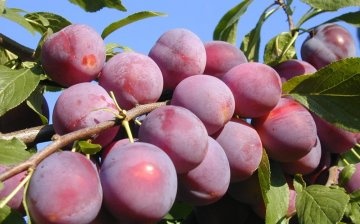
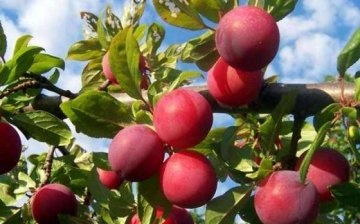
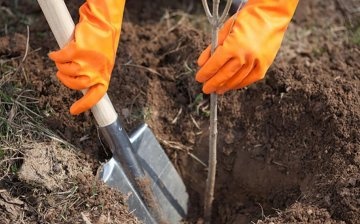

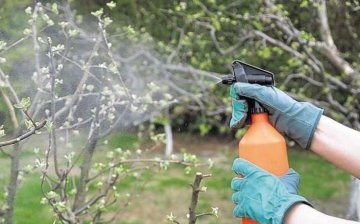





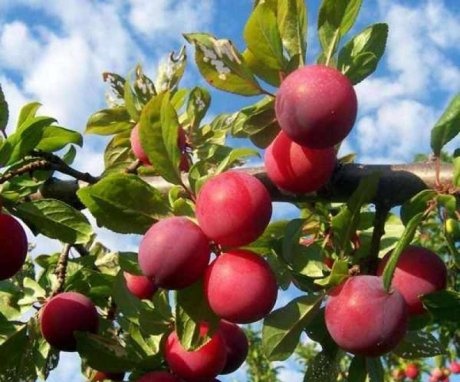
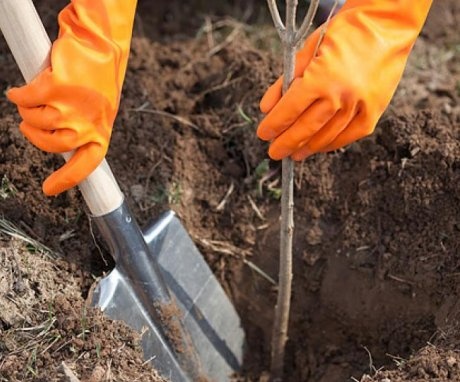

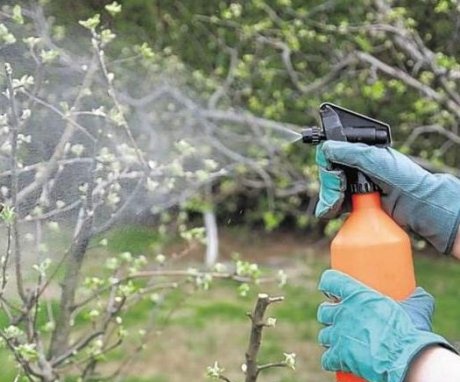
We tried in the Moscow region to try to grow cherry plum and took this variety, and the variety released to the middle lane. It was possible to grow, but even with flowering, the fruits were not tied.
Dear reader of this amazing information forum, Olga Mironovna Sveridova! And what kind of land do you have on the site where you tried to plant cherry plum? And what varieties have you tried?
On our site, cherry plum grows remarkably, there are always a lot of fruits, I don't remember that someday the year was bad.We don't take care of the trees, we treat them against pests and that's it.